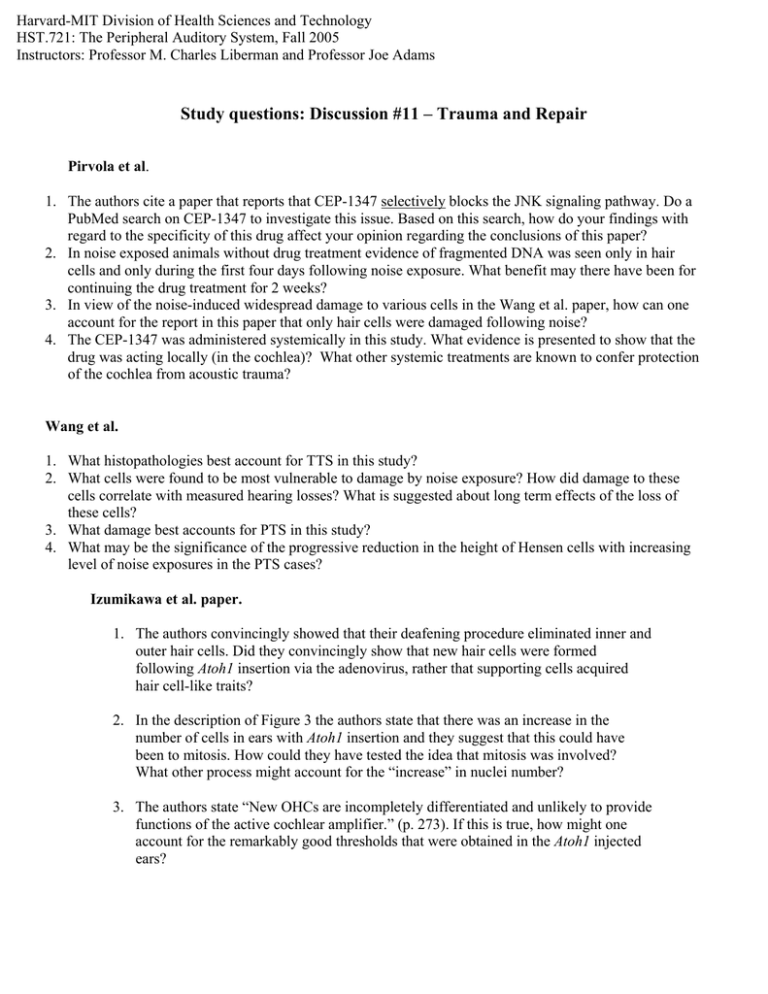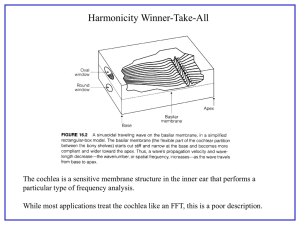Harvard-MIT Division of Health Sciences and Technology
advertisement

Harvard-MIT Division of Health Sciences and Technology HST.721: The Peripheral Auditory System, Fall 2005 Instructors: Professor M. Charles Liberman and Professor Joe Adams Study questions: Discussion #11 – Trauma and Repair Pirvola et al. 1. The authors cite a paper that reports that CEP-1347 selectively blocks the JNK signaling pathway. Do a PubMed search on CEP-1347 to investigate this issue. Based on this search, how do your findings with regard to the specificity of this drug affect your opinion regarding the conclusions of this paper? 2. In noise exposed animals without drug treatment evidence of fragmented DNA was seen only in hair cells and only during the first four days following noise exposure. What benefit may there have been for continuing the drug treatment for 2 weeks? 3. In view of the noise-induced widespread damage to various cells in the Wang et al. paper, how can one account for the report in this paper that only hair cells were damaged following noise? 4. The CEP-1347 was administered systemically in this study. What evidence is presented to show that the drug was acting locally (in the cochlea)? What other systemic treatments are known to confer protection of the cochlea from acoustic trauma? Wang et al. 1. What histopathologies best account for TTS in this study? 2. What cells were found to be most vulnerable to damage by noise exposure? How did damage to these cells correlate with measured hearing losses? What is suggested about long term effects of the loss of these cells? 3. What damage best accounts for PTS in this study? 4. What may be the significance of the progressive reduction in the height of Hensen cells with increasing level of noise exposures in the PTS cases? Izumikawa et al. paper. 1. The authors convincingly showed that their deafening procedure eliminated inner and outer hair cells. Did they convincingly show that new hair cells were formed following Atoh1 insertion via the adenovirus, rather that supporting cells acquired hair cell-like traits? 2. In the description of Figure 3 the authors state that there was an increase in the number of cells in ears with Atoh1 insertion and they suggest that this could have been to mitosis. How could they have tested the idea that mitosis was involved? What other process might account for the “increase” in nuclei number? 3. The authors state “New OHCs are incompletely differentiated and unlikely to provide functions of the active cochlear amplifier.” (p. 273). If this is true, how might one account for the remarkably good thresholds that were obtained in the Atoh1 injected ears?





